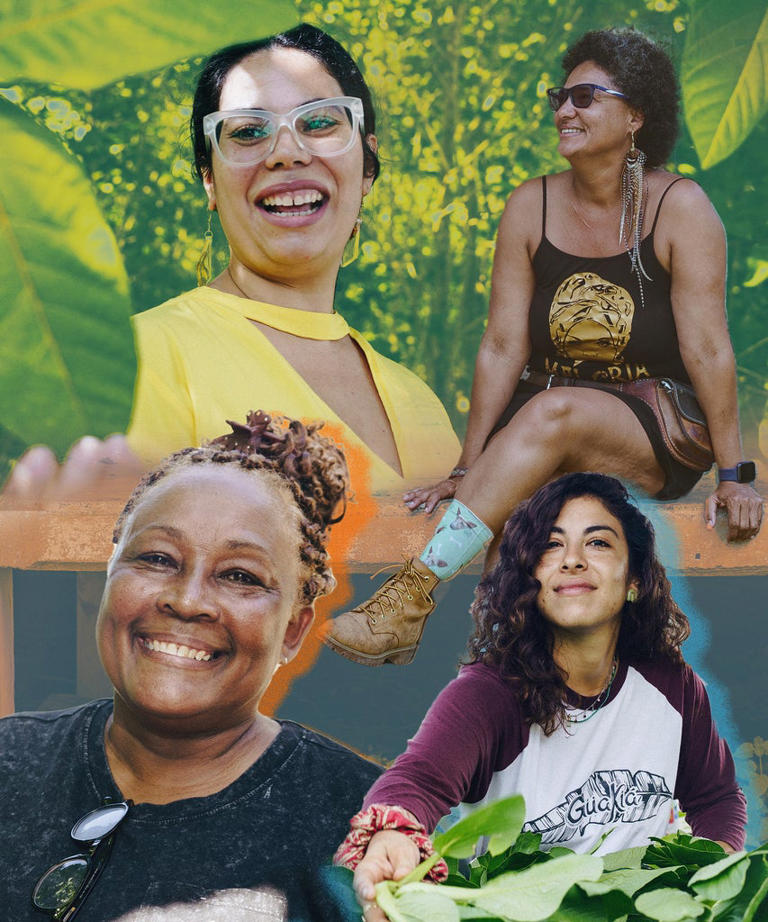
© Provided by Refinery29
Ablock away from a disused fishing village, Anabela Fuentes García found the ideal place to teach sustainable fishing practices to children in Loíza, Puerto Rico. The structure was an abandoned, white-walled building. Piles of dry leaves filled its interior because there was no roof to protect it from the wind or rain. Surrounded by deterioration, all Fuentes saw was potential, a resource to nurture the next generation of marine biologists, lifeguards, divers, fishermen, and captains.
In the summer of 2022, we met Fuentes underneath the shady tropical almond tree in front of her house. From her ears hung a silver turtle and starfish, representing her love and connection to the Atlantic Ocean. She wore her braids tied in a bun, and donned a black T-shirt that read: “You can do anything.”
After she and her neighbors gathered at the building to get rid of the leftover debris from Hurricane María, which caused destruction in Puerto Rico in September 2017, the wheels started turning. The eyesore she had walked by so many times could house Taller Escuela Pescantil (Fishery School and Workshop), a project she started developing with her daughter, to rescue the fishing trade in Loíza.
Once again, the community came together and purchased the building. Construction started recently. Now, a sign announces the three organizations that will take residence there in the near future.
Fuentes is a community leader in Medianía Alta, a region of Loíza heavily impacted by coastal erosion. Loíza has a population of about 22,657 people and a higher poverty level than the average for all of Puerto Rico, according to the U.S. Census Bureau.
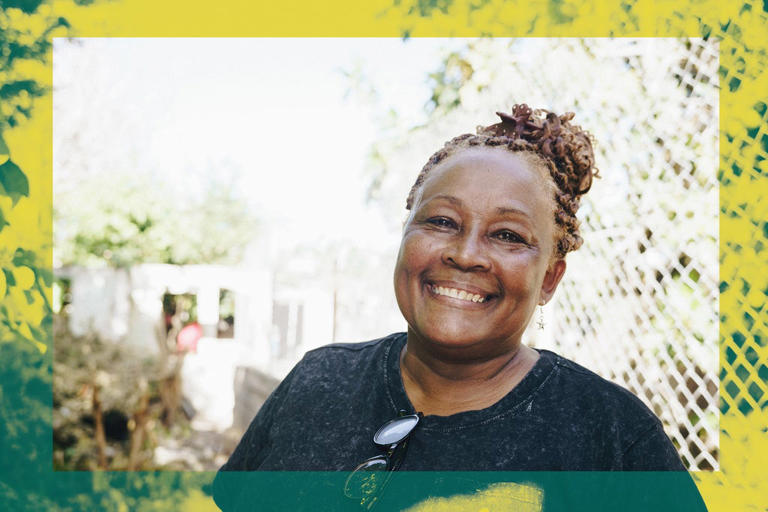
“We need prosperity in our town of Loíza,” says the 58-year-old grandmother. “And if we have the resources, why not make it into an economic incentive for ourselves?”
Access to capital is one of the main challenges for women leading environmental justice initiatives around the world. For example, according to Oxfam, 58 million women in Latin America live in the countryside; however, only 30% of them own agricultural land, and only 5% have access to technical assistance.
Moreover, racial discrimination creates another layer of economic inequality in these environmental protection and conservation projects. Green 2.0, a nonprofit organization that advocates for increasing racial diversity in environmental groups’ leadership, states that typically, in the United States, “foundations are funding white-led organizations at nearly 40% more annually than POC-led organizations.” The discrepancy is even higher for operational budgets, which cover staffing and unrestricted operating costs. The Green 2.0 report found that organizations with executives who identify as non-Latine white receive nearly twice as much operational funding as organizations led by people of color, which the report described as including Black, Latin American, Asian, Native American, Hawaiian, and Middle Eastern communities.
And still for others, funding isn’t even the biggest hurdle; it’s bureaucracy. As Mariangelie Ortiz, who organized her community after Hurricane María, explains, community groups could not obtain the proper business permits, such as a 501(c)(3) status, so they could not seek help from municipalities or other organizations who asked them to register as tax-exempt organizations. As the community liaison at La Maraña, a local nonprofit that financially supports communities in designing the spaces they inhabit, Ortiz sees their frustration first-hand.
“So how do communities receive money,” Ortiz asks. “They don’t if not through community organizations … the diaspora … [and] people who believe in the communities.”
Community-based groups in Puerto Rico denounce the lack of government support in post-disaster recovery. La Maraña’s work to strengthen community participation is not something the local government assumes as public policy. Instead, the government continues to perpetuate colonial practices through its lack of autonomy and its unwillingness to make room for citizen participation.
In August 2023, Fuentes received some of the funding she needed to open her school. La Maraña, through the Participatory Design Lab, offered $17,000 in seed money to Taller Escuela Pescantil and 20 other Puerto Rican communities. Fuentes indicates that the funds will not only help renovate the space but also make it possible to expand and include a community kitchen and a gastronomic tour to promote economic development. The second floor of the building will be a tsunami escape tower, given its proximity to the coast.
In Puerto Rico, environmental organizations represent 1.3% of all nonprofits, and as the archipelago faces the disproportionate effects of climate change, these groups are necessary. Through her work, Ortiz has met many women who are leading climate justice solutions. “This very powerful movement that is now emerging around climate change represents women, and certainly represents poor women [and] Black women, who live in the areas that are being affected right now, such as the coasts,” she emphasizes.
This photo essay and oral history project highlights women like Fuentes, who are cultivating and nurturing innovative projects that address environmental and climate injustices throughout Puerto Rico.
Ablock away from a disused fishing village, Anabela Fuentes García found the ideal place to teach sustainable fishing practices to children in Loíza, Puerto Rico. The structure was an abandoned, white-walled building. Piles of dry leaves filled its interior because there was no roof to protect it from the wind or rain. Surrounded by deterioration, all Fuentes saw was potential, a resource to nurture the next generation of marine biologists, lifeguards, divers, fishermen, and captains.
In the summer of 2022, we met Fuentes underneath the shady tropical almond tree in front of her house. From her ears hung a silver turtle and starfish, representing her love and connection to the Atlantic Ocean. She wore her braids tied in a bun, and donned a black T-shirt that read: “You can do anything.”
After she and her neighbors gathered at the building to get rid of the leftover debris from Hurricane María, which caused destruction in Puerto Rico in September 2017, the wheels started turning. The eyesore she had walked by so many times could house Taller Escuela Pescantil (Fishery School and Workshop), a project she started developing with her daughter, to rescue the fishing trade in Loíza.
Once again, the community came together and purchased the building. Construction started recently. Now, a sign announces the three organizations that will take residence there in the near future.
Fuentes is a community leader in Medianía Alta, a region of Loíza heavily impacted by coastal erosion. Loíza has a population of about 22,657 people and a higher poverty level than the average for all of Puerto Rico, according to the U.S. Census Bureau.

“We need prosperity in our town of Loíza,” says the 58-year-old grandmother. “And if we have the resources, why not make it into an economic incentive for ourselves?”
Access to capital is one of the main challenges for women leading environmental justice initiatives around the world. For example, according to Oxfam, 58 million women in Latin America live in the countryside; however, only 30% of them own agricultural land, and only 5% have access to technical assistance.
Moreover, racial discrimination creates another layer of economic inequality in these environmental protection and conservation projects. Green 2.0, a nonprofit organization that advocates for increasing racial diversity in environmental groups’ leadership, states that typically, in the United States, “foundations are funding white-led organizations at nearly 40% more annually than POC-led organizations.” The discrepancy is even higher for operational budgets, which cover staffing and unrestricted operating costs. The Green 2.0 report found that organizations with executives who identify as non-Latine white receive nearly twice as much operational funding as organizations led by people of color, which the report described as including Black, Latin American, Asian, Native American, Hawaiian, and Middle Eastern communities.
And still for others, funding isn’t even the biggest hurdle; it’s bureaucracy. As Mariangelie Ortiz, who organized her community after Hurricane María, explains, community groups could not obtain the proper business permits, such as a 501(c)(3) status, so they could not seek help from municipalities or other organizations who asked them to register as tax-exempt organizations. As the community liaison at La Maraña, a local nonprofit that financially supports communities in designing the spaces they inhabit, Ortiz sees their frustration first-hand.
“So how do communities receive money,” Ortiz asks. “They don’t if not through community organizations … the diaspora … [and] people who believe in the communities.”
Community-based groups in Puerto Rico denounce the lack of government support in post-disaster recovery. La Maraña’s work to strengthen community participation is not something the local government assumes as public policy. Instead, the government continues to perpetuate colonial practices through its lack of autonomy and its unwillingness to make room for citizen participation.
In August 2023, Fuentes received some of the funding she needed to open her school. La Maraña, through the Participatory Design Lab, offered $17,000 in seed money to Taller Escuela Pescantil and 20 other Puerto Rican communities. Fuentes indicates that the funds will not only help renovate the space but also make it possible to expand and include a community kitchen and a gastronomic tour to promote economic development. The second floor of the building will be a tsunami escape tower, given its proximity to the coast.
In Puerto Rico, environmental organizations represent 1.3% of all nonprofits, and as the archipelago faces the disproportionate effects of climate change, these groups are necessary. Through her work, Ortiz has met many women who are leading climate justice solutions. “This very powerful movement that is now emerging around climate change represents women, and certainly represents poor women [and] Black women, who live in the areas that are being affected right now, such as the coasts,” she emphasizes.
This photo essay and oral history project highlights women like Fuentes, who are cultivating and nurturing innovative projects that address environmental and climate injustices throughout Puerto Rico.
Marissa Reyes, Finca Güakiá

“Food liberates people,” says Marissa Reyes, under a gazebo that members of the Güakiá Agroecological Collective built.
When you see the abundance of bok choy, cucumbers, amaranth, and wildflowers on this Dorado farm, it’s hard to think that this place was a hidden dump. In the summer of 2017, the group reached a collaborative agreement with the owners of the space, the Dominican Sisters of the Holy Cross. As soon as they arrived, they explained their intention to create a farm for the San Carlos community in Dorado. They chose the name Güakiá, which means “we” in the language of the Taíno, an Indigenous group in the Caribbean.
After clearing the space, hurricanes Irma and María struck in September 2017. “Then, we paused any potential farm operations and focused on seeing how we could work with the community to get out of despair, anxiety, depression, lack of food, lack of water,” she explains. They decided to hand out food, lead cleanups, and organize meetups at the farm with psychologists and psychiatrists.
In 2019, they resumed farming, but other problems soon arose. Unknown people began to dispose the cars they used for illicit activities at the site. On one occasion, the farmers discovered a corpse inside one of the vehicles. The collective built a gate, but it quickly came down and a burning car greeted the group. The situation had escalated so much that the collective decided to relocate. While Güakiá found a new home, the founders are now turning to partner organizations to purchase it.
Returning to the ancestral practice of agriculture has been arduous, especially in a society that values profit more than sustainability. “It is a life project to be a farmer and produce food,” Reyes says. “And large corporations and industrialization have separated us from this [way of] remaining and being part of the ecosystem. Agroecology came to rescue what was already ours.”
Ada Ramona Miranda, Finca la Malcría

For Ada Ramona Miranda, growing up in Aguirre, a neighborhood in the southern municipality of Salinas, was beautiful. Her family had food security because they had a garden and raised chickens and pigs. She also had a school and movie theater within walking distance. Yet, the Aguirre of recent years is very different. The school and theater have closed. Many houses sit abandoned. And a huge decaying iron structure remains, a reminder of the inequities that Puerto Rico’s sugar production past brought.
Developed as a company town, Aguirre traces its beginnings back to 1898, a year after the U.S. invaded Puerto Rico.
Within this context, Ada has decided to learn practices to promote health, including agroecology, renewable energy, and regenerative tourism, which seeks to nurture a destination instead of extracting resources from it. She is putting all her learnings into practice with her own project in Adjuntas: Hacienda Las Malcriá.
The independent legislator from the municipality of Salinas offers workshops and grows coffee trees. Recently, she won first place in the eighth La Taza de Oro competition in the category of natural or unwashed coffee, a technique where one dries coffee with its pulp.
She invested in a property for her organization, but to make the purchase possible, she had to take on other jobs and dedicate less time to farming. Still, that hasn’t stopped her from chasing her dream. Ada wants Hacienda Las Macriá to be a space where women can connect with nature and with their own self-worth. Malcría, which comes from the Spanish word “malcriada,” directly translates to “badly raised.”
“We are coming out of being poorly raised… of being poorly raised by the patriarchy,” Ada says, adding that she hopes to create “a healing space for women.”
Yvette Nuñez, Coalición Restauración Ecosistemas Santurcinos (CRES)
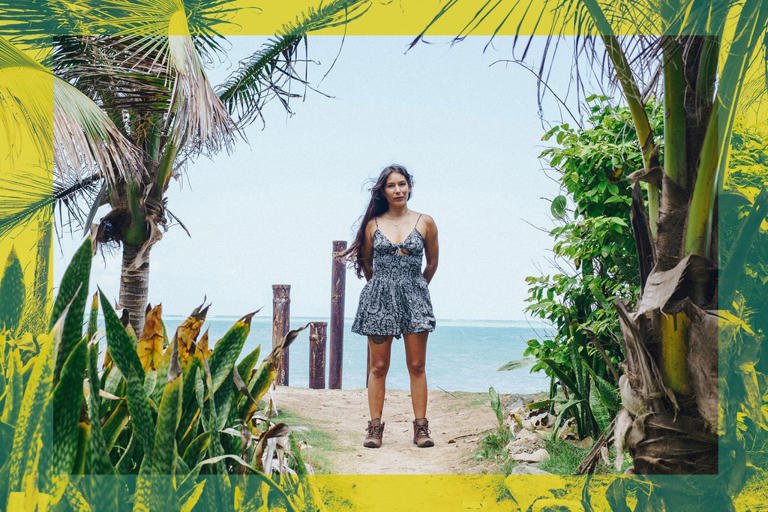
The relationship between humans and the ecosystems that surround us fascinates Yvette Nuñez. Her studies in anthropology and urban planning have given her a different perspective on environmental issues. “Everything I’ve learned, I’ve implemented in the day-to-day life in community and the restoration work through that harmonious blend of what is the human component within an ecosystem,” she says, remembering the coastal forest in Punta las Marías that the community rescued a decade ago from becoming a private beach. “There was a fight so this space wouldn’t be closed to the public.”
By law, beaches in Puerto Rico are public domain. Neighbors united after a developer started construction near the coast. The project never came to fruition, but waves continuously crash against huge, abandoned rusted foundations to this day.
In 2013, Yvette joined a group of community members to pick up trash and debris left behind by the construction project and people at the Coastal Forest. A year later, she cofounded the Coalition to Restore Santurce’s Ecosystem (CRES, in Spanish) with marine biologist Juan David Murcia Eslava. CRES dedicates itself to restoring dunes and coral reefs in Santurce — once known as San Mateo de Cangrejos. The group has taken care of the forest, created trails, and planted native and endemic tree species. “We were pruning the [trees] that are not native, and we realized that [Hurricane María] took them away, and the native ones were the ones that survived,” she says.
The forest is now a recreational zone where people walk their dogs, bird-watch, pick fruits, and can enjoy a natural space in the midst of an urban area. Many people in the neighborhood discovered the space during the pandemic. Nuñez says, “This is also therapy for people, just being here is therapeutic.”
Mariolga Reyes Cruz, Fideicomiso de Tierras Comunitarias para la Agricultura Sostenible
\
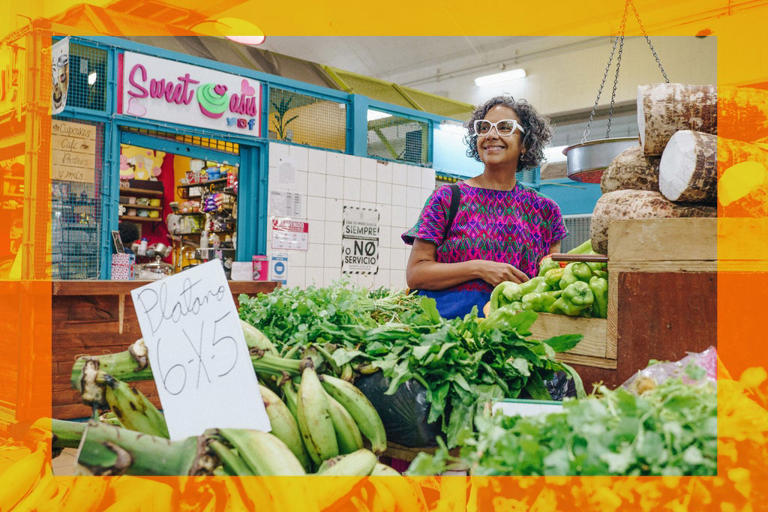
Mariolga Reyes Cruz grew up in Río Piedras, Puerto Rico, with a different idea of life. “I grew up with the mentality of that time: to put a lot of effort into my studies, and thus, make a comfortable place for myself in society, among Black women, Maroon women who were trying to have a dignified life.” Marronage refers to the enslaved people who escaped and liberated themselves.
For Reyes, freeing herself from systems of inequalities in the 21st century means “that one has to juggle to live in systems that are trying to prevent you from living in dignity. One simply has to make escape routes, and flee, and work from the outside; build other lives outside the systems of exploitation.”
In the past few years, her liberation work has centered on food sovereignty in Puerto Rico. That’s why she wanted her photo taken in front of a mural in Plaza del Mercado de Río Piedras, which alludes to Ramón Frade’s “Our Daily Bread” painting, where a jíbaro holds a banana bunch. In the mural, the abundance of the harvest surrounds the farmer. Lyrics from Rafael Hernández’s song “Lamento borincano” frame the mural. While she says the image romanticizes the hard work of farming, “it also speaks to us of possible futures where there are other types of economy, based on our relationships with the land.”
Since 2011, she has collaborated with JuanMa Pagán Teitelbaum to document the lives of agroecological farmers in Puerto Rico. Behind the scenes, they learned more about the farmers’ struggles. That personal discovery of national and colonial history led them to produce the award-winning film Serán las Dueñas de la Tierra, which premiered in theaters in 2022.
Reyes and Pagán then went on to create the Fideicomiso de Tierras Comunitarias para la Agricultura Sostenible (FiTiCAS), the first community land trust dedicated to ecological agriculture in Puerto Rico. In May 2023, FiTiCAS received its first land donation: a 32-acre farm in Ciales. They are currently working on establishing the best ways to support farmers on common lands and integrating more farms. Part of the work, according to Reyes, is having conversations that deconstruct and decolonize our relationship with the land. “In my family, for generations, we have had to leave and return, leave and return, always looking for the material conditions to stay,” she says. “But to grow roots, you need fertile soil. That is what we are doing, protecting and tending the soil, so we can stay in our land and grow roots.”
Vanessa Uriarte, Amigxs del M.A.R (Movimiento Ambiental Revolucionario)
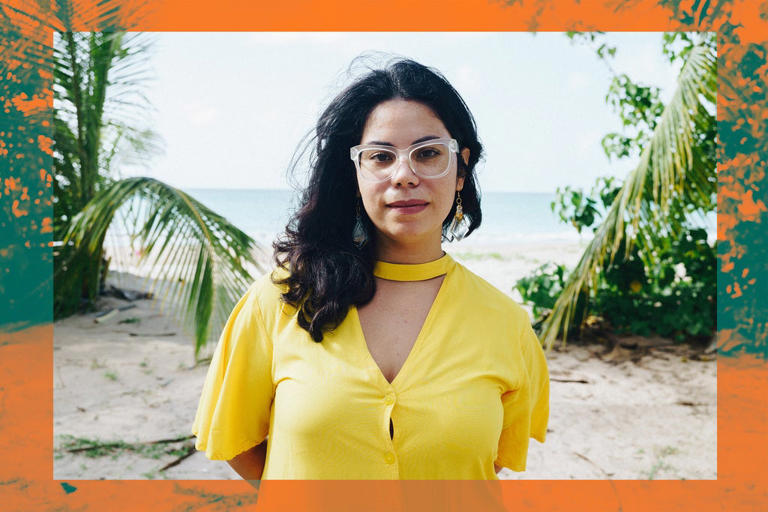
“I’m happy here,” Vanessa Uriarte says as she looks around the ceiba and palm trees of the coastal forest known as Playas pa’l Pueblo (beaches for the people). Uriarte is the codirector of Amigxs del M.A.R., an organization that fights to protect Puerto Rico’s ecosystems and communities through education and advocacy.
It played an integral part in protecting the five acres of land that builders deforested in 2005 to build a hotel, pools, and an underground parking lot. In response, Amigxs del M.A.R., along with other activists and organizations, kicked off a 14-year civil disobedience campaign, camping on site to obstruct construction. “And we sowed this coastal forest and [restored] all of this ecosystem as a counterproposal of how our beaches should look to [not only] defend ourselves from climate change but also so we can see that there are other alternatives.”
The slogan “las playas son del pueblo” has become a rallying cry in the last years as communities in Puerto Rico fight to defend overdevelopment seaside. “[The slogan] has a history before us,” she says. The Playas pa’l Pueblo campaign started in the late 1960s or early ‘70s when pro-independence and socialist groups in Puerto Rico denounced foreign corporations’ and military bases’ privatization of beaches. The protesters, according to professor Érika Fontánez, demonstrated at the Caribe Hilton in San Juan, which owns the only private beach that the government recognizes. However, there are several beaches in Puerto Rico that, for all practical purposes, businesses have privatized, contrary to the archipelago’s law that all beaches are public spaces.
Amigxs del M.A.R. is advocating for a law that would enact a construction moratorium on Puerto Rico’s coast. Uriarte says, “That’s what we’re missing: uniting as towns, to protect our coastal communities and articulate a solution that changes what there is so we don’t keep repeating the same pattern.”
This article is based on an oral history and photo essay that was produced by 9 Millones and made possible thanks to the support of the Economic Hardship Reporting Project. To read all of the profiles, visit madresdelatierrapr.com. Para leer en español, visite TodasPR.
No comments:
Post a Comment